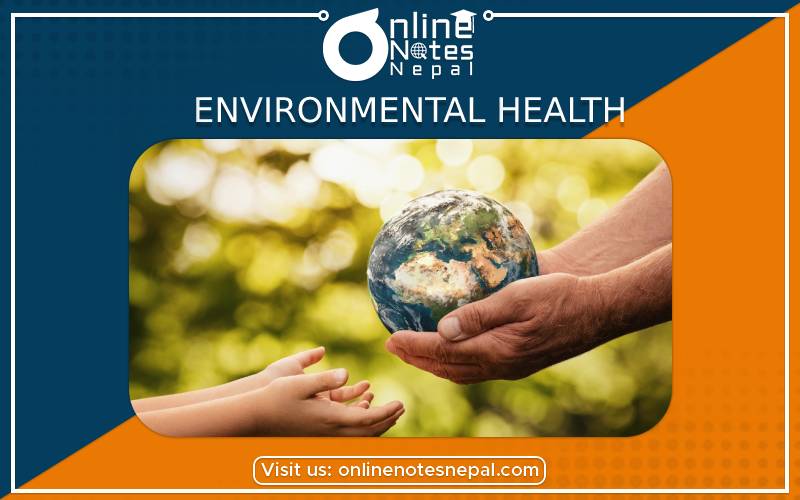Published by: Nuru
Published date: 23 Jan 2022

Environmental health is the branch of Public health which is involved with all aspects of the natural and man-made environment that may affect human health. It is also understood as environmental sanitation. We need to keep the environment clean and healthy.
Water is the next essential elements after air for the survival of all living beings. All living beings contain (65 -70)% of water as an important part of the total body weight. We use water for different purpose such as drinking, cooking, cleaning, washing, bathing, irrigation, generating electricity etc.
Water necessary for most of our agricultural activities as well as to run industries and factories. The dirtiness of water due to the increase of unwanted and harmful materials into it is called water pollution. The causes of health hazards of polluted water are given bellow:
The condition of sickness due to the heavy loss or low supply of water to the body is called dehydration. Some water born diseases like; diarrhoea, typhoid, cholera, indigestion, stomach-burn etc are caused due to the lack of adequate quantity of water in our body.
Dehydration produces many effects in our body. It also effects in a digestive system can not digest food and our body can not get need amount of nutrients. Here, lips become dry where the skin becomes rough and eyes get shrunken which effect in the vision.
The unnecessary solid things like waste food, vegetable, fruits,broken utensils, polyethene bags, useless paper, and rubbish etc are called solid wastes. These wastes are produced from agricultural lands, workshops, markets, households,hospitals,laboratories etc. There are two types of solid wastes they are:
Bio-degradable/Decomposable wastes: The waste produced from animals, plants and foodstuffs Which get composed after some time and that turn into organic matter. Such waste is called decomposable/organic wastes even they get decomposed and get mixed with soil after a long time is called bio-degradable wastes.
Non-biodegradable/Decomposable wastes: The waste like plastic, glass rags metals and other fabrics which do not get decomposed and exist for a long time even they remain in the surrounding without decaying for a long period of time is called non-biodegradable wastes. Here, lips become dry where the skin becomes rough and eyes get shrunken which effect in the vision.
Proper control of solid waste without degrading the environment is solid waste management. They must be classified as biodegradable and non-biodegradable before it is disposed of. Usually, biodegradable waste is turned into compost or buried while non-biodegradable wastes are reused or recycled. Some of them explain bellow :
Preparation of compost are:
Instead of using chemical fertilisers farmer should be encouraged to prepare compost. Compost pit should be dug far away from water sources but in the land at a safe place .
Burying
The wastes which do not pollute the land are biodegradable and they can be buried. Solid waste can be dump to get rid of it if those who do not have own agricultural land. But they should be sure that plastic, chemicals, metal, batteries etc should not be a dump because it pollutes the land.
Pilling or classification
Solid waste is the first step and it's all kind of solid wastes are classified and gather at a place for their proper disposal. Here, both biodegradable and non-biodegradable waste are gathers and arrange separate containers for its purpose of classification. In compost pit, the waste at the top remains same but base part gets decomposed. So weekly we need to use a shovel to moved the waste. When waste converted into compost then we can be used on the farm.
Reuse is the method of using material without extra processing. Here, we can be reused some things without changing their form and size some of them are; plastic bottles, polythene bags, old books etc.To reduce the waste it must be reused instead of throwing them.
Recycling is the method of using the materials again after some processing. Here, some materials can be recycled and change their form and size like; plastics, broken utensils, old papers etc. After some processing, the old one new material is obtained which can be used. It reduces non-biodegradable wastes and also helps to reduce the extraction of natural resources. To control quantity of wastes there are some methods of reusing and recycling are given below :
As we know, in the past people used to excreta in the open places or river banks. The latrine is the safe method of human excreta disposal is to construct latrines. A latrine is the best proper and scientific disposal of human excreta for a healthy environment. Yet, in remote areas, people used to excreta in open places because of the lack of health awareness.Still, people are dying due to the simple diseases like ; dysentery and diarrhoea. So, it is very important and should be constructed in every house and also in public places according to the need. There are different types of latrine they are;water sealed latrine,'Sulav'latrine, simple latrine, modern concrete latrine etc. Such latrines help to keep the surrounding clean and maintain environment health.
Use of latrine are:
We know that there are differents types of latrine and it should be made in the safe place. We found simple latrine mostly in remote areas. In such areas, if a pit is full they again start to dug for another latrine.
But now people started to use a water sealed latrine with modern facilities. In this latrine, a pan is always covered by water which helps to prevent bad smell and the germs.
Hazards of Open Defecation are:
Many areas have been declared as 'Open Defection Free'zones it is due to the mass of awareness and health education. In the following various health hazards of open defecation are given :